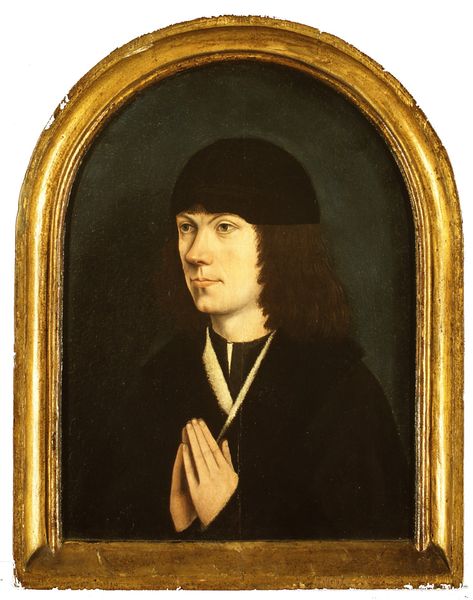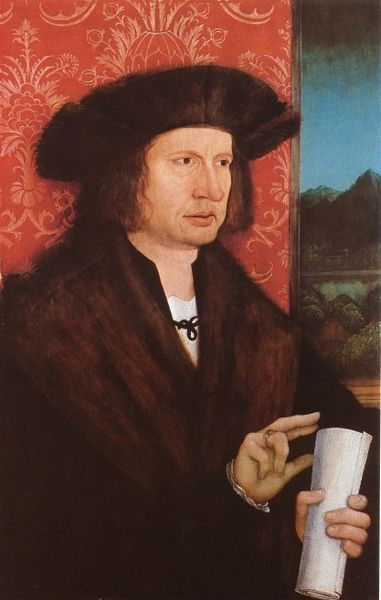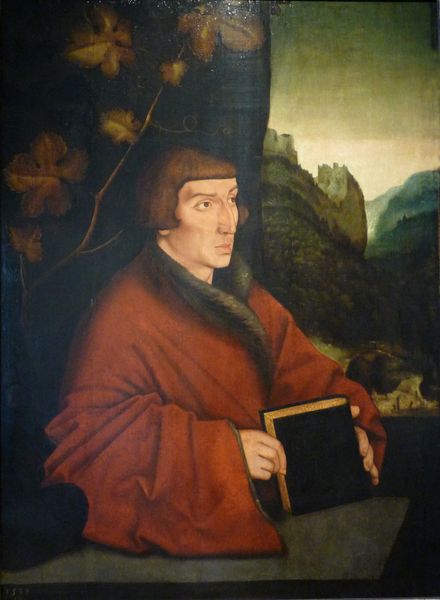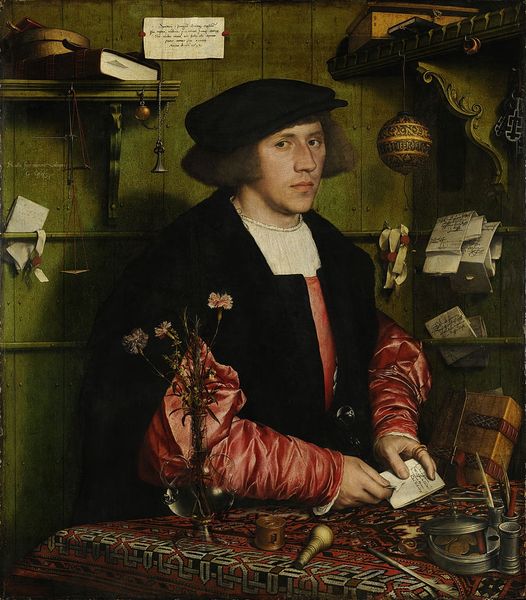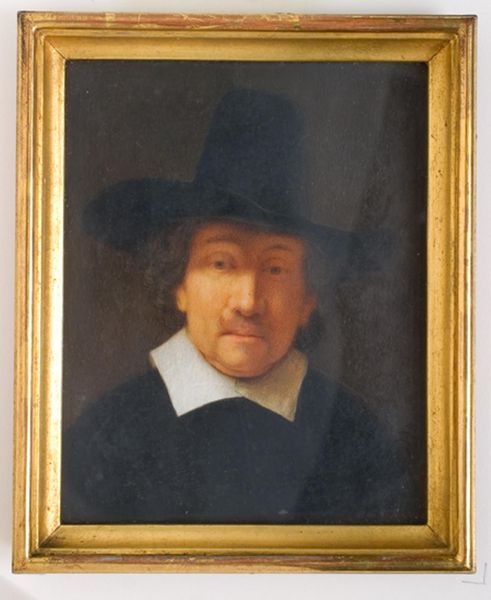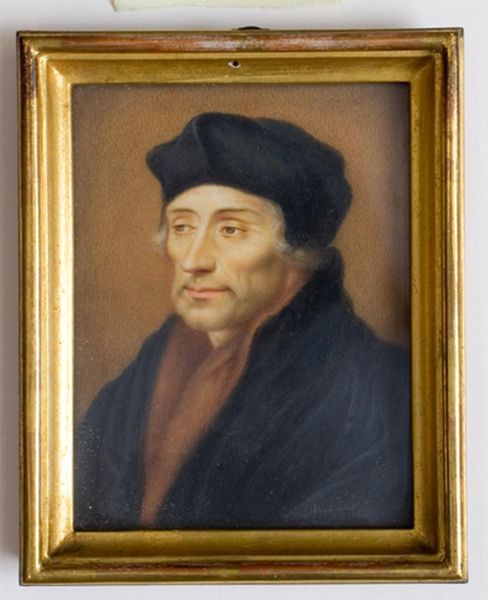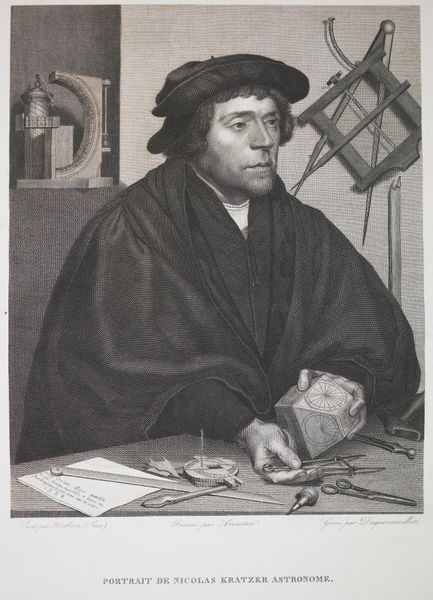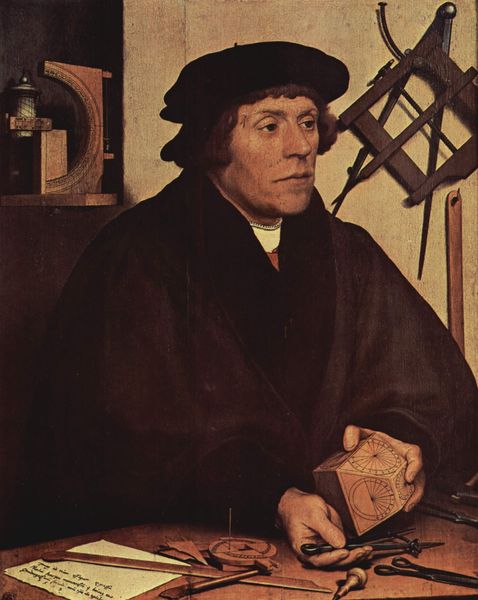
panel, painting, oil-paint
#
panel
#
painting
#
oil-paint
#
oil painting
#
classicism
#
genre-painting
#
history-painting
#
northern-renaissance
#
early-renaissance
Dimensions: 47 x 61.4 cm
Copyright: Public domain
Curator: Quentin Matsys' "Portrait of Peter Gilles," painted in 1517 using oil on panel, presents a captivating figure amidst symbols of intellectual life. Editor: The first thing I notice is the weightiness of the textures: the fur, the pages, and that substantial ledger on the table give the painting a really grounded feeling. Curator: Absolutely. Matsys was a master of depicting tactile reality. But let's consider the identity of Peter Gilles. As a humanist and friend of Thomas More, he embodies the burgeoning intellectualism of the Renaissance. The objects surrounding him—the books, the writing implements—are not mere props. Editor: Right, these materials signal a deliberate crafting of identity. It's worth asking how these symbols connect to Gilles' actual social standing and labor. What kind of paper is that he's holding? How would it have been manufactured and traded? These details reveal much about the networks of production and consumption of knowledge. Curator: Indeed, and it also reveals the kind of man that Peter Gilles wished to be seen as by posterity and his contemporaries. There’s an aspirational element at play as much as the representation of reality, specifically male identity at that time, its ties with early capitalism. He appears as a kind of gatekeeper or mediator of that nascent intellectual, market society. Editor: It’s striking to consider how class and access dictate participation in those intellectual circles. While the painting celebrates humanist thought, it also subtly highlights the material prerequisites necessary for such pursuits. Curator: Exactly! That interplay, between aspiration and materiality, is crucial for a full appreciation of the piece. By intertwining art history and social theory, we are forced to grapple with questions of power and representation inherent to that time. Editor: I find myself also returning to those textures. In our digital age, there’s a renewed interest in the hand-made, a hunger for the tactile. This painting becomes a point of entry to investigate the politics inherent in choosing specific materials over others. What social meanings did that paper, or that particular ink convey at the time? Curator: Well, looking at it with those lenses allows us to ask new, engaging questions of it. Thank you for opening up this artwork! Editor: Thank you. I walk away pondering the lasting power of materials to tell social stories, to become an active element when understanding human identity.
Comments
No comments
Be the first to comment and join the conversation on the ultimate creative platform.
